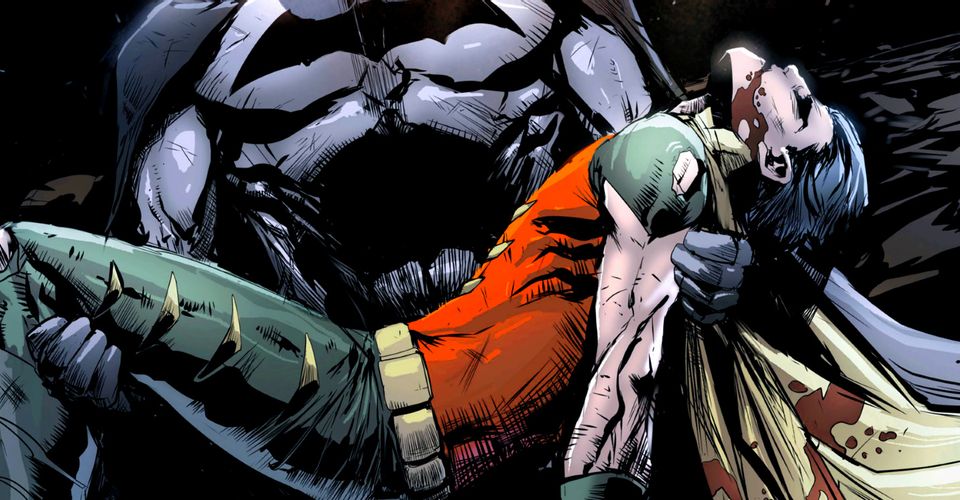Why DC Let The Joker KILL Robin in Batman Comics

In 1988, DC made comic book history when Batman lost a Robin, beaten and left to die in an explosion by Joker. And ever since, fans have debated the reasons–and whether or not DC made a mistake. In the early 1980s, DC Comics tasked Gerry Conway and Don Newton with creating a new Robin, as Dick Grayson had grown out of Batman’s shadow and was on his way to becoming the Nightwing fans love. But writers and editors still felt Batman needed a sidekick. The result was Jason Todd, a Dick Grayson copycat from ‘the other side of the tracks’ who soon donned the red suit and green shorts as the new Boy Wonder.
Jason’s backstory was rewritten in 1986 in the aftermath of the Crisis on Infinite Earths epic. But behind the scenes there was a major editorial change at DC Comics, with former Batman and Detective Comics writer Denny O’Neil overseeing the franchise. O’Neil had a very different approach to Batman, drawn to a darker style that came to define the Dark Knight for generations to come. And Robin began to seem increasingly incongruous.
Matters came to a head in 1988, in what proved to be one of the most controversial comic book stories of all time. “A Death in the Family” saw Batman pay a terrible price for his heroism, with Jason Todd brutally murdered by the Joker. The decades would make it a part of accepted comic canon, and more or less reversed. But why would DC endure the PR nightmare of killing Robin, and why did it all go so wrong?
Did DC Comics Really Want Robin Dead?

Comic books were getting darker and more mature, and Denny O’Neil wanted Batman at the forefront of the movement (understandable). He brought on board a new writer, Thanos creator Jim Starlin, who frankly wasn’t at all interested in Robin. Speaking at a New York Comic Con panel in 2016, Starlin explained that from the costumes alone, “going out and fighting crime in a grey and black outfit while you send out a kid in primary colors was kind of like child abuse.” Starlin ignored Robin for as long as possible, and only wrote Jason Todd when he was pushed to do so. His version of Jason was a little more aggressive, and his morality was a LOT more questionable.
In Batman #424, even the Dark Knight himself suspected Jason may have pushed one criminal to his death. While DC had received complaints regarding Jason Todd, they had no idea how widespread the opinion really was. The letters increased in number while Starlin was writing Batman, and all involved took note. When DC was looking to tell a high-profile story tying into the growing focus on AIDS in America, Starlin allegedly suggested Jason Todd to be one such hero affected by the illness. His request was overruled, but six months later Denny O’Neil came up with a solution.
How Jason Todd’s Fate Was Sealed

The minds behind Saturday Night Live had recently launched a 1-900 number dial-in competition, and O’Neil liked the idea. He suggested putting a character’s life on the line for the same contest, and swiftly decided that Jason Todd was the logical candidate. After all, he didn’t believe Jason was popular with the majority of readers anyway. O’Neil considered it the perfect opportunity to get reader participation in the books, and Starlin was on board to write it. “A Death in the Family” kicked off in the double-sized Batman #427, which ended with Jason Todd double-crossed by a woman he believed to be his newly-discovered birth mother. He was instead ambushed and badly beaten by the Joker, and left in a building with a ticking time bomb. Batman arrived just in time to see the building explode… but not before Jason’s fate was confirmed. The inside back cover gave details for readers to call in to one of two numbers: either keep Jason alive, or kill him off.
To cover both potential outcomes Starlin prepared two slightly different versions of the next issue; one in which Jason Todd died, and another in which he was left comatose but alive. Even before the results were decided, not everybody appreciated the twist (legendary Batman writer Frank Miller openly described it as the most cynical ploy DC Comics ever resorted to). In PR terms, it was a massive success, gaining a remarkable amount of press attention. But when the results came in, it’s likely some already knew what a nightmare they were in for.
The results were close, with 5,343 people casting votes for Jason to die, compared to 5,271 who wanted him to live–a majority of just 50.34 percent, or 72 individual calls. The divide was much closer than Starlin or O’Neil expected, and reports have claimed ever since that one disgruntled fan programmed a computer to ensure a vote was cast for Jason to be killed every 90 seconds for eight hours. True or not, DC didn’t know about it, and as far as they were concerned, Jason Todd’s fate was sealed. They published the death issue, with Batman carrying Robin’s burned body out of the flames.
Robin’s Death Didn’t Go As Planned

Whether or not DC editorials realized their initial miscalculation, the votes had been cast. Once the dust and marketing hype settled, seeing Jason betrayed by his birth mother, beaten almost to death by Joker with a crowbar, and then left to die in an explosion… was obvious overkill. Readers sympathized with Jason Todd–a child, remember–and turned against the publisher. Press coverage became intensely critical, marketing and merchandise departments were now faced with explaining why DC had murdered a child, while also being left with entire ranges of Robin merchandise now losing value. Jim Starlin’s run came to a swift and decisive end, although he never complained. He simply returned to Marvel Comics to kill half of all heroes in his classic Infinity Gauntlet saga.
The Batman franchise’s darker direction–which included Jason Todd’s death and The Killing Joke, a story that crippled Batgirl–ultimately proved to be a huge success, in spite of all these bumps in the road. Ironically, though, Jason Todd didn’t stay dead; he was brought back to life in 2003 in a resurrection plot that saw him become a ruthless vigilante called the Red Hood. The character has recently made his live-action debut in DC Universe’s Titans series, where he’s generally considered one of the most complex and enjoyable characters.
It remains to be seen whether or not Titans will follow the same direction as the comics, now that DC has learned their lesson the hard way. But even if they do, anyone familiar with the comics will know his death is, at best, temporary.
About The Author

















